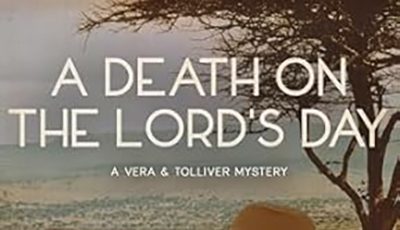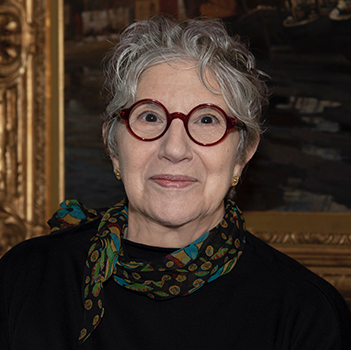

Features Out of Africa: Annamaria Alfieri by Michael Sears
Out of Africa – Kenya of the early nineteen hundreds revisited

Annamaria Alfieri
Annamaria Alfieri is the author of three critically-acclaimed historical mysteries set in South America and four novels set in Kenya in the early nineteen hundreds. The Africa series follows the Commandments – or rather the breaking of them. The first book, Strange Gods, takes place in the burgeoning British East African town of Nairobi in 1911. The Richmond Times said Alfieri writes “with the flair of Isak Dinesen and Beryl Markham, the cunning of Agatha Christie and Elspeth Huxley and the moral sensibility of our times.” The novels capture the beauty and the danger of the African wild, and the complexities resulting from imposing a culture on a foreign land. The main characters are a couple of rather different young people – Justin Tolliver, a policeman, and Vera McIntosh, the daughter of a missionary. It’s also the story of Justin’s black police colleague, Kwai Libazo, half Kikuyu and half Masai and accepted by neither tribe.
An enthusiastic traveler, Annamaria takes a deep interest in the history of the places she visits, and she admits that she’s addicted to Africa. She lives in New York City, and is a past president of the New York Chapter of Mystery Writers of America.
Here are her thoughts on her latest book in the series.
 In The Blasphemers, life changed for Justin, Vera, and Kwai. Justin left the police force and Kwai was fired. Justin and Vera chose to become settlers, buy land, and start a farm. They have given Kwai a job, but the relationship between Kwai and Justin is now strained. The new situation suits neither of them. Did you see the resolution of this tension between the two men as a driving imperative for the new novel?
In The Blasphemers, life changed for Justin, Vera, and Kwai. Justin left the police force and Kwai was fired. Justin and Vera chose to become settlers, buy land, and start a farm. They have given Kwai a job, but the relationship between Kwai and Justin is now strained. The new situation suits neither of them. Did you see the resolution of this tension between the two men as a driving imperative for the new novel?
I don’t think their tension is a driving imperative so much as a complication, making it difficult for them to work together to solve the crime – something they had always done in the previous stories. The crime in this story gives them an opportunity to heal the estrangement, because they can’t solve the crime or support the search for justice unless they open up to each other.
Your books are known for their meticulous historical research and detail. One might say that both the setting and the history are characters in A Death on the Lord’s Day. Would you comment?
It seems my imagination only wants to linger in times past in order to make up mystery stories. To write them, I have to know my characters and feel as if I am there with them. It feels to me as if I am reading their minds. I begin by researching the history and setting deeply enough so that the characters living in that time and place start walking around in my head. The story doesn’t happen for me until I can follow them, see what they see, experience the history of their times, and feel their emotional reactions to the time and the place. Then, all I need to do is describe what they see and feel and write down what they say. I’m afraid that this sounds like nonsense. But it is a true description of what happens in my mind.
It makes sense to me!
Early in the story, the body of Kwai’s half-brother is discovered, shot in the back. This immediately implies a white killer as the blacks of colonial Africa don’t have guns. Justin, Vera, and Kwai now use their detection skills and their new status to investigate the killing that the authorities seem to find more of an embarrassment than a crime. The issues are threefold – who is the killer, why did he kill the man, and is it possible to bring him to justice. Much of the tension is around the third question, because the white community splits between those who feel that the killer is within his rights, and those who feel he is guilty of murder. In the meanwhile, anger bubbles up among the local blacks people. In a way, all these groups belong to different “cultures”. Do you feel the disagreements and friction between them was inevitable?
 Yes, in the sense that colonialism, wherever it was inflicted on indigenous people, led to exactly that outcome. In the case of British East Africa in the early 20th Century, there was already friction among the thirty-something tribes that lived on that land before the Brits moved in. And as the different European groups moved in, there was also friction among them: the missionaries disagreed with the administrators on what the white people’s goals should be. The administrators resented the snooty aristocrats who comprised most the settlers. These frictions, against the backdrop of the splendid physical surroundings, are what attracted me as a setting for a series. New plots would be easier to come by. The people who lived there then had a lot of reasons to want to kill one another.
Yes, in the sense that colonialism, wherever it was inflicted on indigenous people, led to exactly that outcome. In the case of British East Africa in the early 20th Century, there was already friction among the thirty-something tribes that lived on that land before the Brits moved in. And as the different European groups moved in, there was also friction among them: the missionaries disagreed with the administrators on what the white people’s goals should be. The administrators resented the snooty aristocrats who comprised most the settlers. These frictions, against the backdrop of the splendid physical surroundings, are what attracted me as a setting for a series. New plots would be easier to come by. The people who lived there then had a lot of reasons to want to kill one another.
Kwai is actually the protagonist of this story. His family background, emotions, and the way he sees the settlers, forms an intriguing backdrop. He, rather than Justin, has the contacts to get to the heart of the murder. Was it a conscious decision to give him a leading role in the new book?
Michael, I can thank you for that. The last time you interviewed me, about the second book in the series, you suggested that at some future point, I might think about giving Kwai Libazo a leading role. Kwai has been in the series from the beginning. I needed him because he could see things from a point of view that might seem anachronistic for a white person living there at that time. I’ve always enjoyed being in his head. But when you said that to me, it felt like a nice idea for the future. I had already thought about the plot of A Death on the Lord’s Day and how the body would be discovered. I was not consciously thinking about what you had suggested. I started to draft the first scene. It came along quite nicely. Then all of a sudden, at the very end of it, three Kikuyu came out of the bushes and told Clarence McIntosh that the dead man was Kwai’s half-brother. I swear that I had no idea they would be there. E Voilà! Kwai was going to be the main investigator. Thanks to you! And I really enjoyed what a charming guy he is when given enough time in the limelight.
 Another series character who gets a bigger role in this novel is Vera’s father, the Reverend Clarence McIntosh. His sympathetic approach smooths the developing problems between Justin and Vera and also between Kwai and Justin. More than that, he is probably the best politician of the group, and it is he who realizes how to bring some justice to the situation by applying pressure through the group of local missionaries. I’d always thought that the missionaries in Africa kept well clear of the colonial administrations. Was that overly simplistic?
Another series character who gets a bigger role in this novel is Vera’s father, the Reverend Clarence McIntosh. His sympathetic approach smooths the developing problems between Justin and Vera and also between Kwai and Justin. More than that, he is probably the best politician of the group, and it is he who realizes how to bring some justice to the situation by applying pressure through the group of local missionaries. I’d always thought that the missionaries in Africa kept well clear of the colonial administrations. Was that overly simplistic?
Perhaps your view of it was more historically accurate when it comes to day-to-day behavior, but there is plenty of evidence in the memoirs I’ve read of tension between the administrators and the missionaries. In the case of this story, it was inspired by a real case of a settler who shot a tribal man in the back. In that case, the missionaries took a stand. Of course, what I wrote is fiction. Even the real people who show up in the story are presented as fictional. But in real life, as in my fiction, the missionaries saw it as their duty to take what they considered the morally correct stance.
Denys Finch-Hatton, Karen Blixen, and Baron Blixen all play minor roles in the story, linking the Tollivers’ new Ngong farm with Out of Africa. Why did you choose to include them, and what special challenges face the historical novelist integrating real people into a story?
All my novels have real people in them, but I present them in a fictional way. Given how famous Karen Blixen became, I could not imagine visiting that time and place without running into her and the now somewhat famous other people who were there. That said, I do not stray far from what the real people were like, as much as we can know them from biographies and their own writing. It is fun for me to have them in the story, and I hope that—for those who know of them—it will also be fun for readers to have them show up and take a minor role.
A Death on the Lord’s Day is the fourth in the series following the Ten Commandments so we have six more to look forward to. What lies ahead for Vera and Justin?
Well, given that A Death on the Lord’s Day starts in June of 1914, it’s not much of a leap for readers to imagine that World War One is coming soon. Most people seem to know only the dreadful history of the Western Front and the carnage there. But, though little known that war was also fought between the British and the Germans in Africa. So there will be three war-time stories—1915, 1916, and 1917. A kind of Tolliver’s War, if I may be so bold. The aftermath of what happened in Africa in those years, of course, still reverberates. Then in 1918 and 1919, we will have the aftermath of the war and the difficulties of getting back to “normal.” Especially in the face of the Spanish Flu. In 1920, British East Africa officially becomes a British colony. I’ve known for some time what happens to my dear imaginary friends at that point. Given that this is planet Earth, there will be surprises.
Find out more about Annamaria and her books on her website, join her on Facebook, and follow her blog.
- Out of Africa: Annamaria Alfieri by Michael Sears - November 19, 2024
- Africa Scene: Abi Daré by Michael Sears - October 4, 2024
- International Thrills: Fiona Snyckers - April 25, 2024
